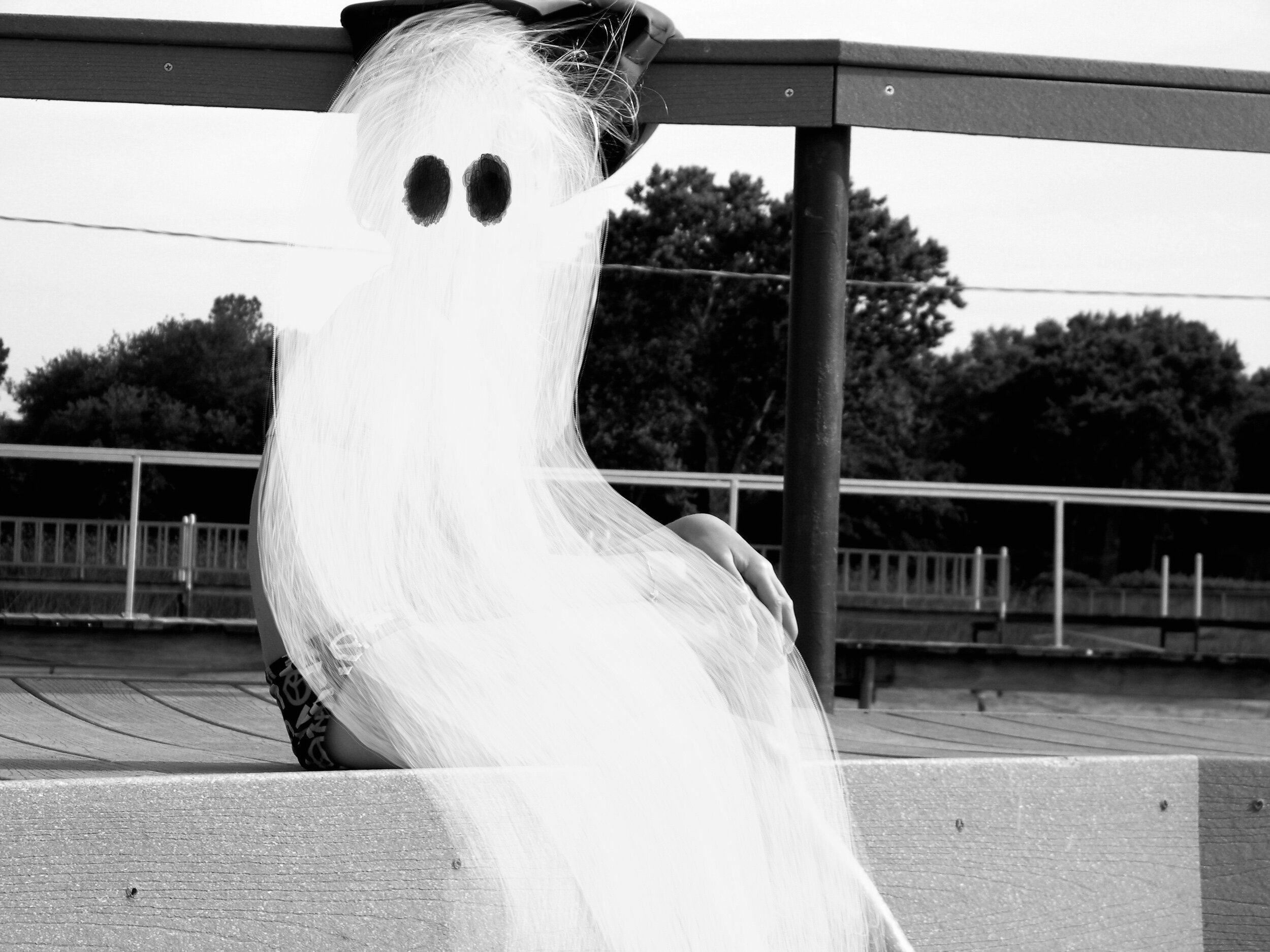Gossamer
Visual by Vivian Chambers
I’m exactly the type to call Hamlet, prince of Denmark, melodramatic. This is usually the point where my teachers explain that Hamlet is no such thing: he is suffering, he is soaked in a blue he cannot shake, but he is not melodramatic. With the word melodrama comes the ideas of irrationality and youth, of teenagers chasing road lines and swallowing them up with nice cars.
Much as I hate to admit it, this is fair. We’ve crafted the word melodrama around exactly that. Melodrama is the life of the party and the loner in the corner, lights reflecting off her face. It is the high and the crash, the music’s tones sinking into the couch like we do. I think of Lorde, Mitski, and every woman who put a ghost on the cover of her debut album. Thus, melodrama is attached to youth, but also to women. It is the way my head tilts back when I talk about something I desperately love, when my heart spills over my fumbling fingers like the first cup of coffee in the morning.
But I hold my own and say that Hamlet is melodramatic, even one of the most melodramatic personnages that I’ve read of. The prince is thirty years old, so he is no longer as youthful as we would assume when describing a melodramatic, nor is he feminine. At least, he is not typically feminine. Still, with his hands up to his head and his fingers tense, with that twitch in his jaw and those quiet wails of grief, Hamlet is a study in melodrama.
This weekend I saw a ghost and I’m still seeing it. This weekend I saw Hamlet in Brooklyn, with Ruth Negga playing the title role. Yes: a woman playing Hamlet in a production that traveled the ocean to get here from Ireland. The images flash in my mind like a reel playing back. I’m forgetting how Negga sounded as the prince but seeing her last scene everywhere:
There is a final quiet on the stage and only one person left. Hamlet kneels, surrounded by the traitorous bodies of his family and his friends. Horatio watches but does nothing, his fingers white on the door handle. This is where Hamlet delivers his last line, where he says “the rest is silence” and falls to the ground. Negga’s body becomes limp, her limbs both boxy and graceful. The play truly does fall into silence.
If this were a traditional rendition of Hamlet, Fortinbras would come into the palace to signify the rebirth that comes after tragedy; however, this isn’t a traditional production of Hamlet. A thin, translucent sheet more like a gossamer covers the stage from floor to ceiling, as every dead character rises to stand behind it. One by one, they place their hand up to the sheet while Hamlet lies still on the ground. Then, all at once, every light in the theater goes out. Is there not a beautiful melodrama in that? In a story that truly ends in death unaccompanied by birth?
So, yes. I think Hamlet, both the play and the person, is melodramatic. He throws fits and goes mad, but it all comes from a very real place of inevitable suffering. This is melodrama. I am suffering. I am melodramatic. But it’s all real. “Seems, madam?” mocks Hamlet in Act One, “Nay, it is; I know not seems.”
